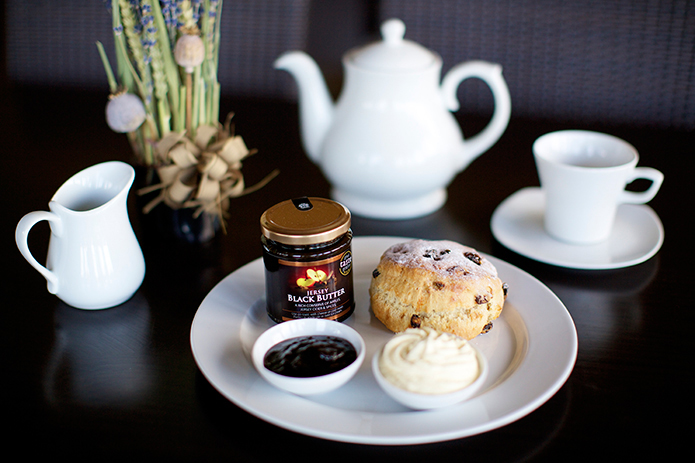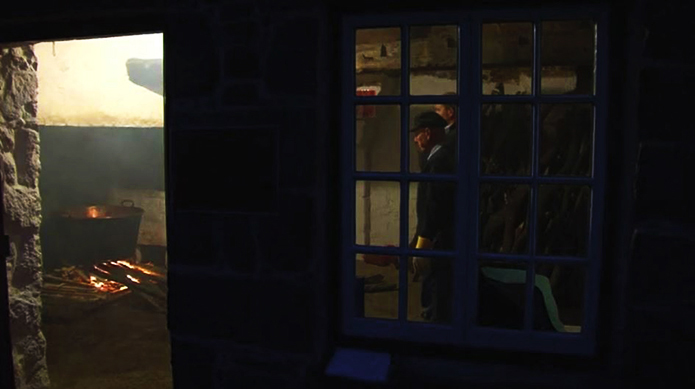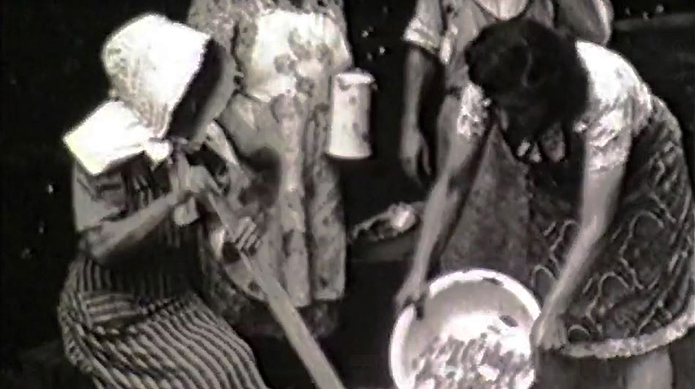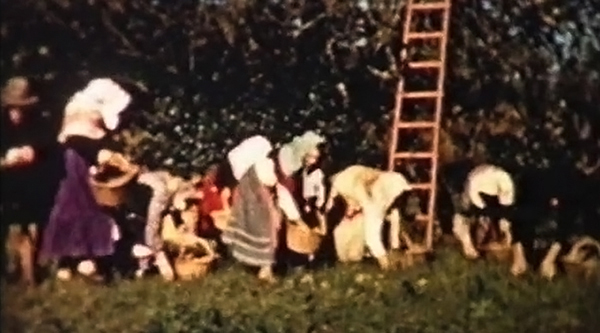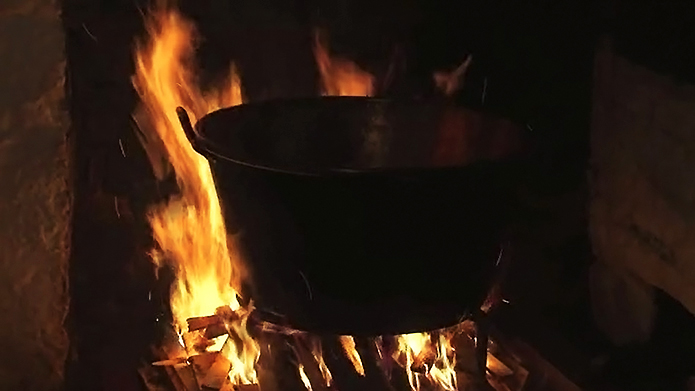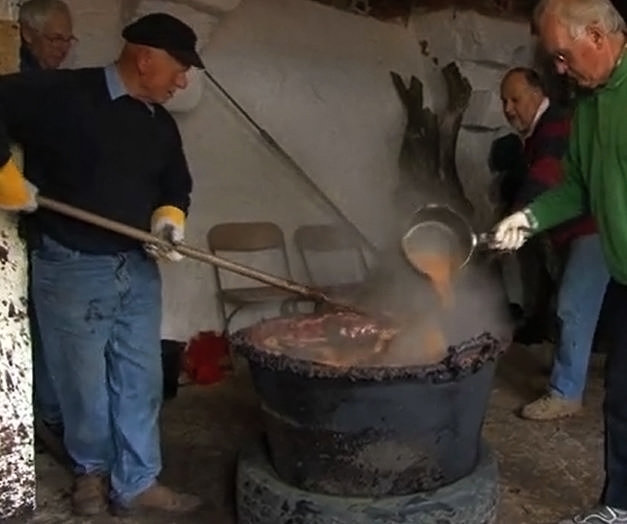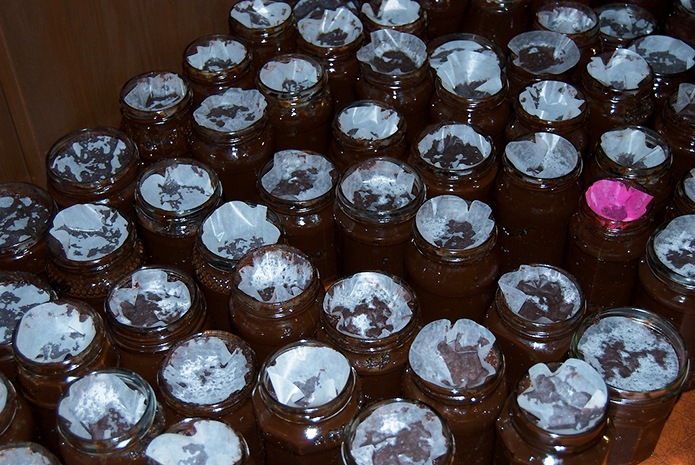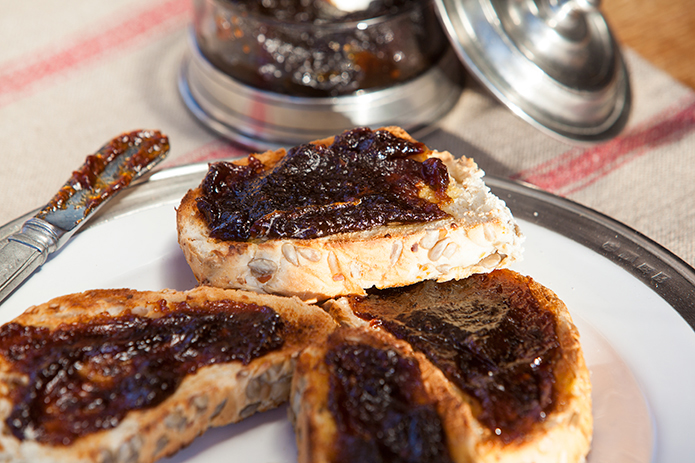
Jersey is the most southerly of the British Isles, located only 22 kilometres from the French coast of Normandy. Fairly independent, the Bailiwick of Jersey is known as a centre for international finance, and has its own currency, legislation and local government. Famous for its potatoes, creamy milk and lovely bays, it is still a fairly popular tourist destination. Uncovering Jersey’s heritage is not easy. Much of it has already disappeared and the rest lies hidden, but scraping a little bit under the surface I found about a very unique local recipe: black butter.
I moved to Jersey in 2007, and as my home country is Chile, I felt an outsider. Being a visual anthropologist I started looking for something unique remaining of its Norman French heritage and I was eager to unveil the cultural layers of the place that was meant to be my home. The first time I heard about the black butter was at The Elms, while visiting Mark Stanley-Price, former Director of Durrell Wildlife, and his wife Karen, who used to live in this unique listed house. We were chatting about the property and the events that the National Trust organizes every year. Suddenly she mentioned the black butter, which for my surprise was not a dairy product, as it is made with apples. “I think I’ve got some left… let me see”, she said. She went back to the kitchen and came back with some strange dark spread that tasted like “Christmas”. Its only connection with real butter is its semi fluid consistency, which allows it to be spread on bread, just like you do with butter.
I forgot about it till several months later, when we heard of the black butter making event, and our curiosity brought us back to The Elms. I went with my husband and young daughter to have a look how this remarkable recipe was being prepared. We took some great pictures and of course tried to help with the stirring, sharing a community experience that reminded me of the rural lifestyle of southern Chile. So far, Jersey was for me a well-known tax heaven with one of the highest numbers of millionaires for square meter, a middle class British society that provides services and an army of temporary foreign migrants who make the farming and leisure industry possible. The local Jersey people were still a kind of mystery for me, but they were about to appear.
When we arrived at the small smoky room where the black butter was being made my husband immediately said with excitement: “You must film this”, and he was right. I was pregnant and tired, just the idea of making such a documentary seemed like a dream for which I did not feel capable of. Motherhood was taking over my life and my filmmaker expertise felt like a distant past. But things changed; my baby was born and I managed to get a little bit more sleep. I set my production company and started filming once again. It was like having my lungs full of fresh air after a long summer nap.
I was surprised to discover that there is very little visual record about black butter making, and I thought it was my duty to try to get it on film. On the next Black Butter Event I decided not to miss the opportunity, but I had to move fast. The black butter night 2009 was just around the corner and, I feared I would not have enough time to produce the film, as I had no budget, no camera, and no team. I contacted a producer friend of mine to see if he was interested to give me a hand. He lent me some equipment and helped me to film the event. I contacted the National Trust for Jersey and they were very open and happy with the idea.
For two days I filmed and enjoyed one of the most fantastic experiences I ever had. We didn’t have a full professional crew, but we got some good stuff and some great testimonies not only about making black butter, about personal stories and the local heritage involved: like cider, bean crock and Jerrias, the local French-Norman dialect which is classified as an extinct language, as it is not the native tongue for the new generation, and it only survives as a second language. I had the honour to meet an interview some of the last persons who learnt it at home as their mother tongue. This was a world that is somehow almost lost and forgotten. I felt the responsibility to spread the word and contribute to bring the black butter to the eyes of the world.
The project started taking off the ground once I discovered some fantastic footage and musical archive and the authorization to use it for the film. My husband – who has become a fantastic editor-, was not only a fundamental person to motivate me to do it, also to put it all together. A composer – and Chilean compatriot – based in New York wrote a soundtrack specifically for this film and some sponsorship helped to cover part of the post-production and copies. BBC Jersey provided their studio to record the voice over and the Avant Premier at the Jersey Museum – despite de rain – was a success.
The recipe and its origins
The black butter is an apple spread which is made form the remaining apples which were not used for the cider making, another traditional local recipe. Its original name in Jersey French is Nier Beurre, but as with many other local names, it has been translated into English. Nobody knows for sure when was it invented, but there are recipes that can be traced back to the 14th Century. During the 17th Century twenty percent of Jersey’s arable land was made up of orchards, which were used mainly for the cider production.
In the old times almost each farm produced their own black butter, which was kept to sweeten the long winter. This spread was used mainly to put on the bread, or to accompany white meats. The style could vary from one parish to another, but the basic process remains the same, which starts with the picking up of the apples, making the cider and using the spare apples and cider to prepare black butter. This traditional local farm-house delicacy, and a perfect example of the rural culture of the Island.
The National Trust organizes every autumn a black butter night to keep this tradition alive. The process, which takes two days of hard work, involves the community, who all gather together to peel and incredible amount of apples, cut the into slices and cook them slowly in cider in a big copper cauldron on the fire, stirring non stop for hours and hours using a wooden paddle called “rabot”.
I found in the book “Saint Martin, history of and island parish” a very good description of how black butter nights used to be: “An ever-popular event was the making of black butter. This in an apple preserve so named on account of its colour when cooked. For days previous, apples had been peeled and sliced, then emptied in a large circular pail or bachin placed on a tripod in the hearth over a wood fire; cider was copiously applied, also spices and cinnamon and in some cases liquorice to darken it. The stirring had to go on for hours, in fact it was an all-night job, and neighbours would gather to join in the stirring, working in relays, by means of a long handled wooden rake; between the relays a certain amount of flirting and merrymaking went on: these were called black butter nights – sethée de nièr beurre. They were frequently repeated during the long winter nights and were immensely popular.”*
There is a similar spread in Brittany, which they call “le beurre du pauvre”, the butter of the poor, and “apple butter” is being prepared in the East coast of the United States and Canada. This is not just a coincidence, as many of the first settlers were coming from Jersey, who where known as great sailors. The traditional woollen garment knitted for the sailors were very popular, as they where particularly resistant and good to repel the water, and got known as a “Jersey”, to honour its origins. The North American versions of the black butter changed the name into Apple Butter, and are being cooked for a shorter period of time and use slightly different spices. In the latest years the apple making fests have become rather popular, but they cannot be compared with the original spirit of the black butter nights of the Channel Islands, which leads directly back to the origin of this ancient recipe. The local music, storytelling and other local specialities, also transforms it into a very special moment.
As the yearly production of the black butter is very limited, is almost only available for those who purchase it during the event of the National Trust, or in the kitchen of another local organisation, as the Trinity Battle of Flowers, who also meet to make black butter, as a social private event.
The local company La Mare Vineyards, has recreated the recipe in an industrial manner, as is being sold in different venues around the island. For those interested in learning more about the Jersey local tradition can reach the SocSercq Museum and Archive, the L’Office du Jèrriais, the National Trust for Jersey and Jersey Heritage.
When I look back I realized that the black butter is much more than a recipe, it is the taste of the past, a wonderful survivor of their medieval heritage, when the island was covered with orchards and the Norman culture was the dominant one. During my filming experience I felt part of the real Jersey that still exists behind the business and tourist brochures. I met very dedicated people who are making an effort to keep their culture alive. Now it’s time for the next generation to get involved and ensure their traditions endure, enjoying the magic atmosphere of the black butter nights.
*Chris Blackstone, Katie le Quesne. Phillimore & Co Ltd, West Sussex for the Parish of St Martin ©, 1999, p.296
Daniela Rusowsky is a communications specialist, with special interest in environmental sciences and sustainable development. As the co-owner of Nature Heritage, an independent consultancy, she specialises in environmental conservation and cultural heritage, linking sound scientific research with conservation management, active environmental education and outreach.

